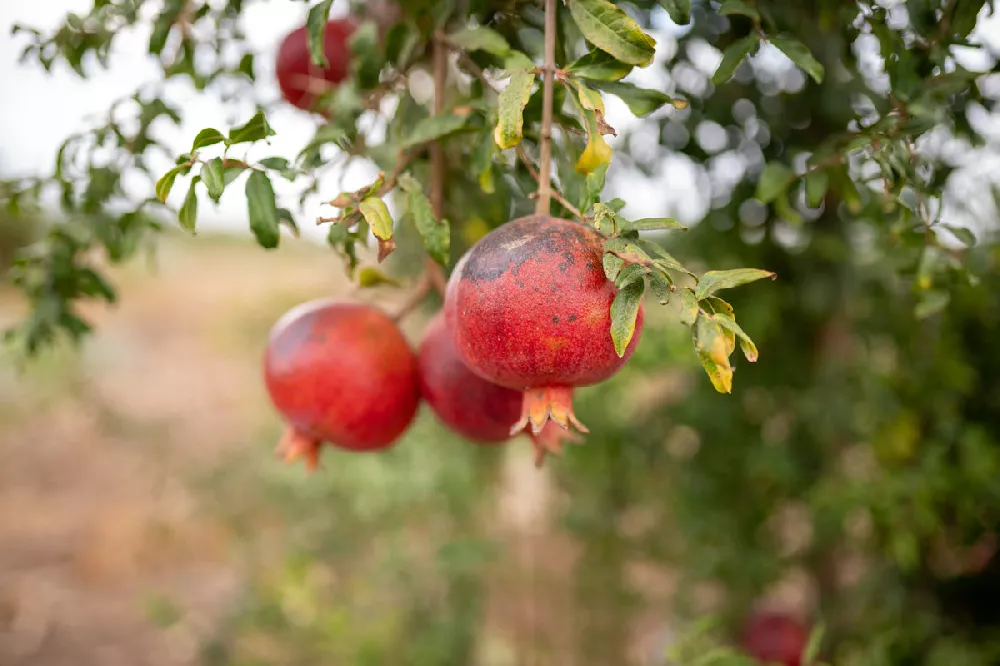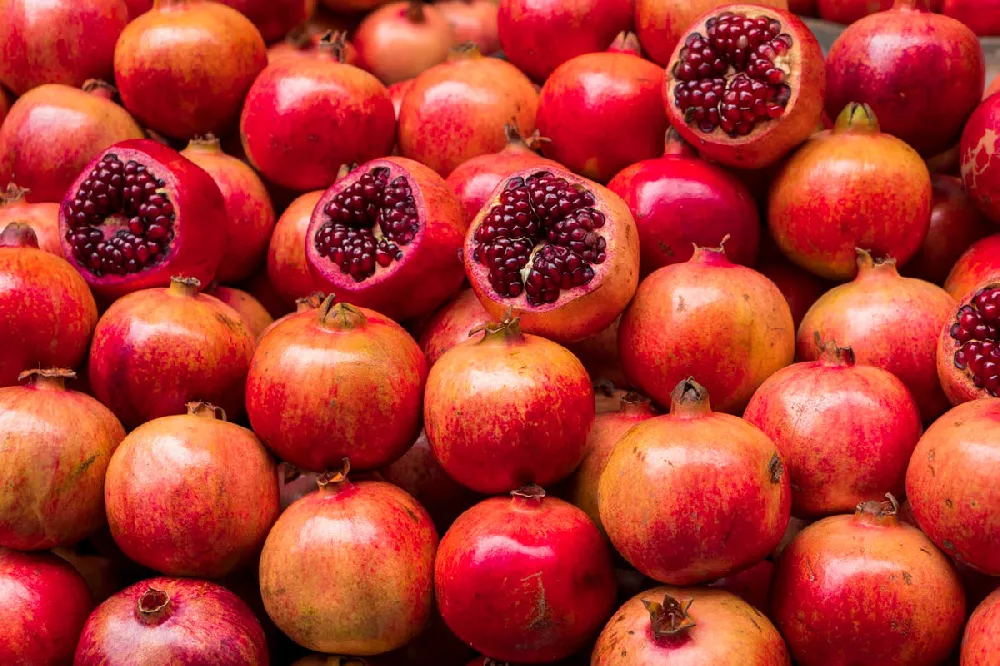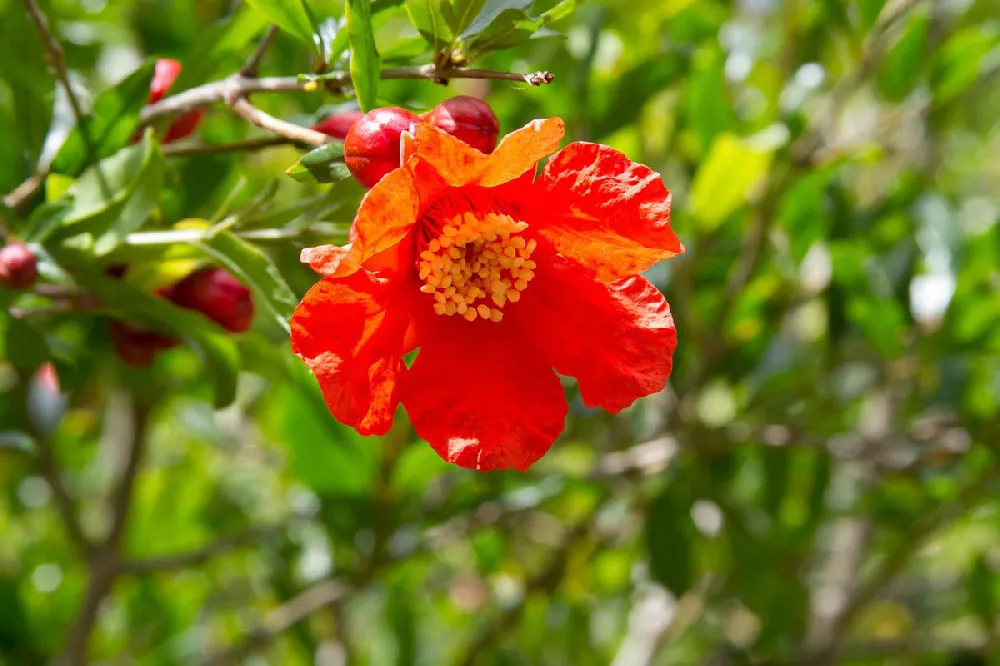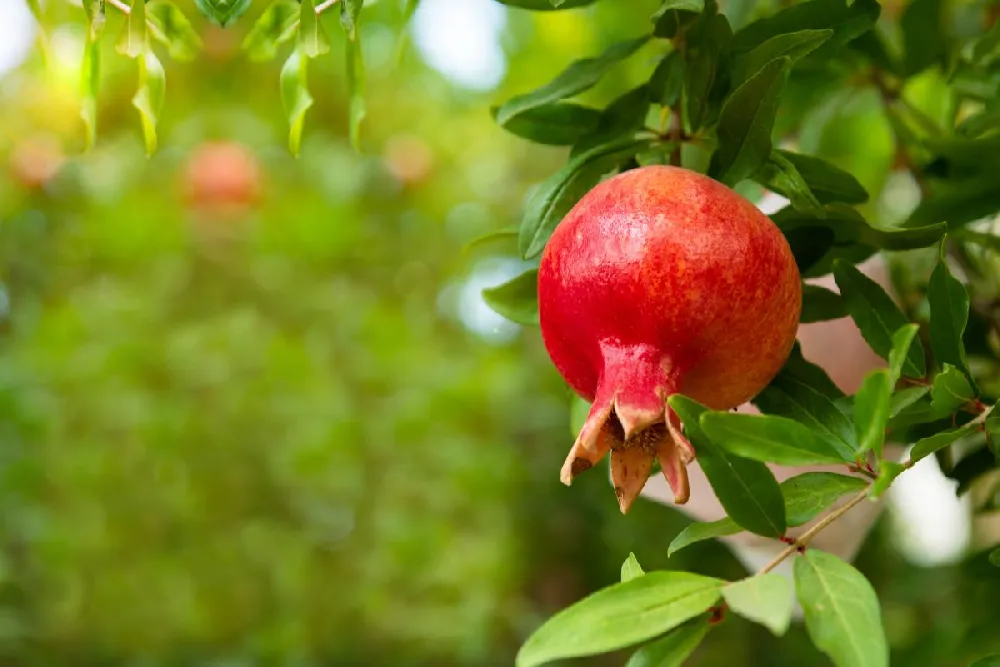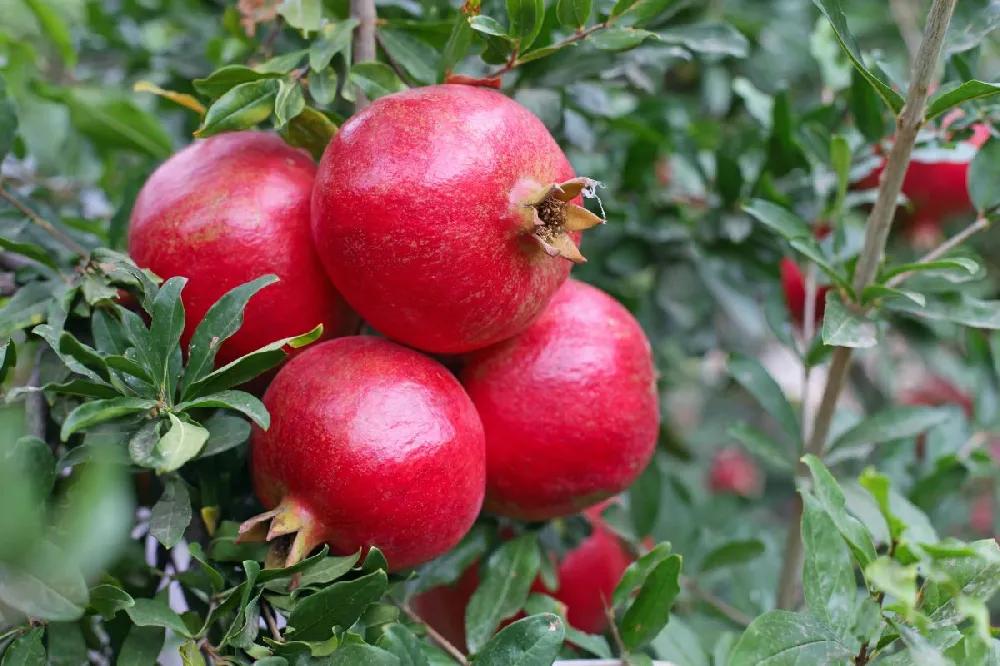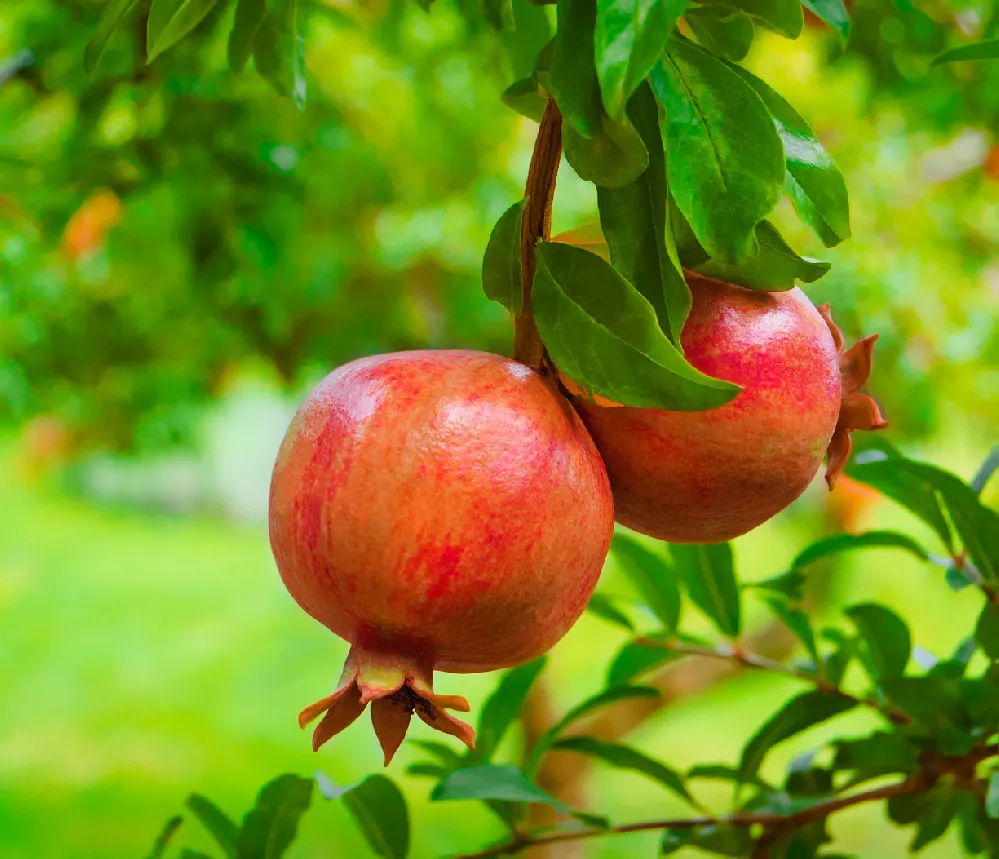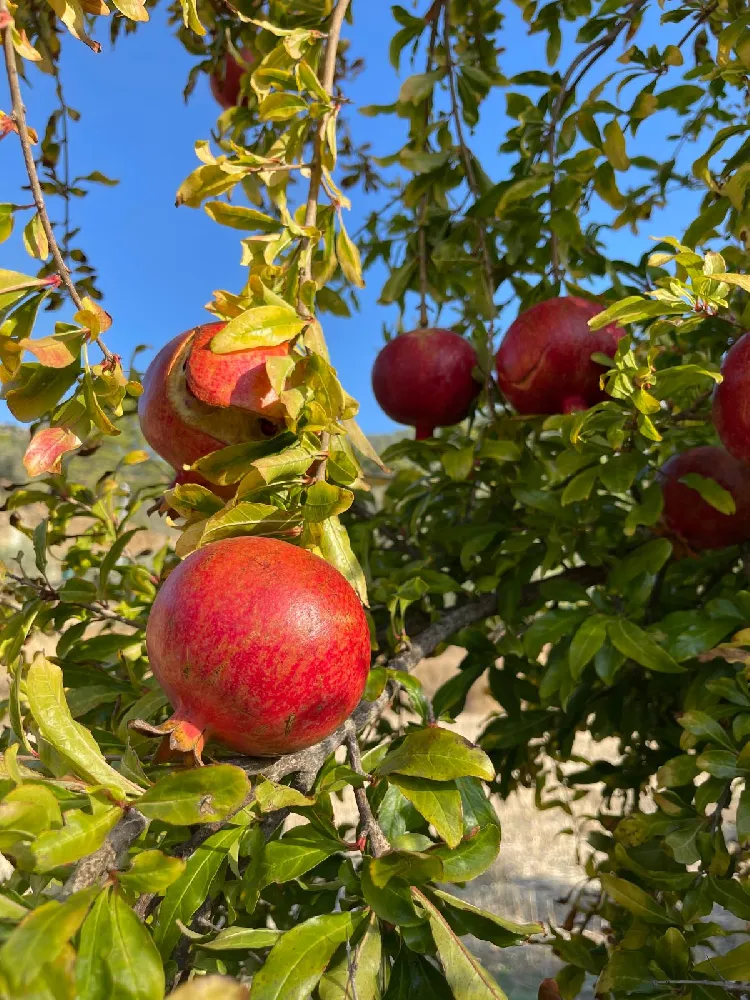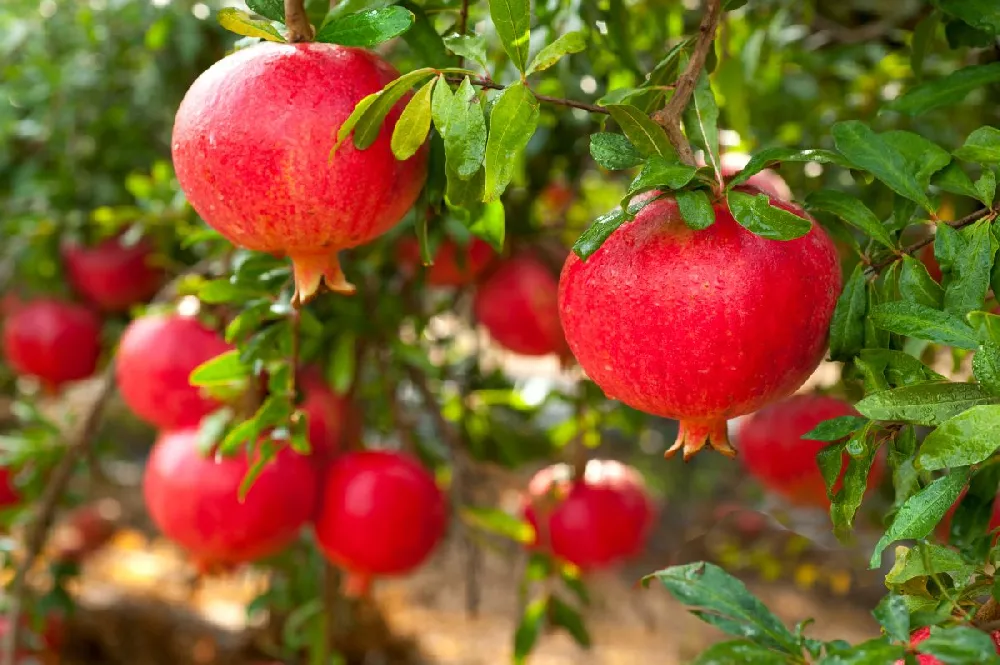- Home >
- Edible Plants >
- Wonderful Pomegranate Trees
Wonderful Pomegranate Trees for Sale
If you enjoy eating pomegranates, the chances are the variety you consume most often comes from the 'Wonderful' pomegranate tree. This cultivated species, known as Punica granatum 'Wonderful', produces a bounty of large fruits late in the season. This tree has been popular for more than 200 years and grows to a manageable size of 20 feet or less. Adding to the appeal of the 'Wonderful' pomegranate tree are its flowers which appear before the fruit and have vibrant red petals.
- This tree is the source of the most popular pomegranate variety in the United States.
- The 'Wonderful' cultivar emerged in the 1800s, boasting large, tasty fruits.
- The flowers of this tree are just as impressive as the fruits.
Enter your zip code to find nearby stores that may carry this plant.
Plant Care
Sunlight

Prefers full sun, about 6 or more hours of exposure per day.
Watering
Generally, drought tolerant but does better with deep waterings every few weeks during hot weather.
Fertilizing

Fertilize twice per year during establishment. Use a nitrogen-rich mix.
Planting and Care
Planting instructions
When planting a ‘Wonderful’ pomegranate tree, you should know that this plant requires a warm climate and a location with full sunlight. This species will also grow best in loamy soils that are moderately moist bordering on slightly dry.
Spacing is essential if you want to grow your ‘Wonderful’ pomegranate tree for fruit production. If that is the case for you, give your tree plenty of space to expand upward and to the sides. About 10 to 15 feet between plants should allow your pomegranate tree enough room to expand, collecting sunlight and nutrients as needed.
Watering and nutrients
An established ‘Wonderful’ pomegranate tree will survive drought periods and will generally prefer soil that is on the dryer side. But although this plant will last in dry conditions, it will produce better fruit if you water it. Try soaking the soil around your tree once every two to three weeks during the hottest parts of the year. This will lead to larger, healthier fruits.
Mature ‘Wonderful’ pomegranate trees often live well without additional fertilization. Younger trees will do best when you give them a nitrogen-rich fertilizer once in the spring and once in the late fall.
Pollination
Since fruit production is one of the top reasons to grow this tree, understanding ‘Wonderful’ pomegranate tree pollination is a must. These trees can self-pollinate and cross-pollinate, meaning that whether you have one or more does not affect fruit development.
At times it is difficult for this tree to spread its pollen via the wind. Instead, it typically relies on pollinator species like bees. If your ‘Wonderful’ pomegranate tree does not produce fruit, it is likely because there are not enough pollinator insects present in your area.
Pruning
Without pruning, a ‘Wonderful’ pomegranate tree will grow in a multi-stemmed habit with long branches. However, you can use pruning to alter that form for better fruit production and to change the visual appearance. Depending on how you prune, this species can resemble a tree or a large shrub.
Prune your tree in the late winter to early spring when the tree is dormant. Remove suckers and any other weak branches. Shortening branches is often the best way to encourage your ‘Wonderful’ pomegranate tree to make more fruit.
Pests, diseases, and animals
‘Wonderful’ pomegranate trees can experience fungal infections that appear as black and brown patches on the leaves. The fungus typically appears when this tree grows in areas that are too moist, and in some cases, it can cause the tree to die.
Pests can also be a problem for this plant as nymphs and aphids are often the cause of infestation. The pomegranate fruit borer is another insect that commonly afflicts the fruits of the ‘Wonderful’ pomegranate tree.
Harvesting
After planting a ‘Wonderful’ pomegranate tree, you can expect to wait a few years before the first fruit arrives. When that first fruiting season comes, the pomegranates will take several months to ripen.
This tree is usually ready for harvest in the fall months of September and October. To harvest properly, use a blade to cut the fruit from the tree. Pulling the fruit without cutting it is likely to cause damage to the bark and branches.
Achieving maximum results
If your ‘Wonderful’ pomegranate tree is not producing fruit after a few years of healthy growth, you should try planting some pollinator flowers near it. Growing a pollinator garden is a great way to increase the number of nectar-seeking insects that arrive at your yard.
If the fruit your ‘Wonderful’ pomegranate tree produces is somewhat lackluster, try adding a mixture of water and Epsom salt to the soil. Pomegranate trees and other pome fruit-producing plants appear to respond well to soil with higher salt concentrations.
FAQs
How long does a pomegranate tree live?
A pomegranate tree's lifespan depends on the conditions in which it lives. A tree that grows in its natural climate can have an exceptionally long life. However, pomegranate trees that grow in cultivated settings have a shorter lifespan. These pomegranate trees are more likely to live for just over a decade.
Do you need two pomegranate trees to produce fruit?
You do not need multiple pomegranate trees if you want to produce fruit. A single tree is enough. While some individual fruit-bearing plants will have either male or female flowers, that is not the case for pomegranate trees. Pomegranate trees have all the reproductive organs they need on a single plant. All they need is a bee or another pollinating insect to carry their pollen from one flower to another. If that occurs, the tree will begin to grow healthy fruits.
How can you know if pomegranates are ripe and ready to pick?
You should choose whether or not to pick a pomegranate based on a number of factors. First, is it the time of year, early to mid-fall, that their fruit is usually ready for picking? Next, you should look at the size and color of the fruit. A pomegranate that is ready for harvest is usually a few inches wide and can be as many as 5 inches in diameter. It should also have a deep red color.
